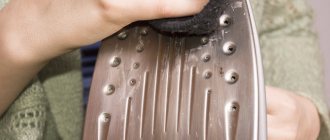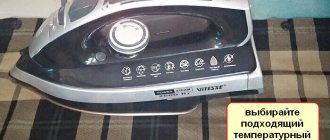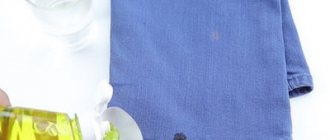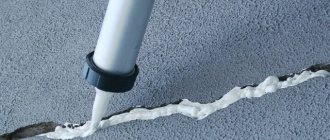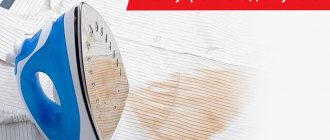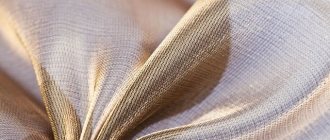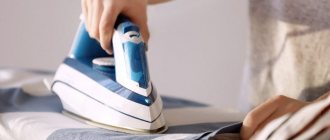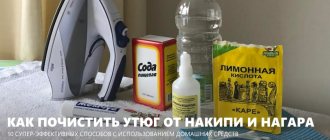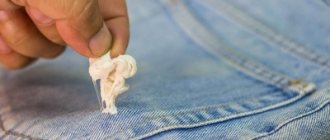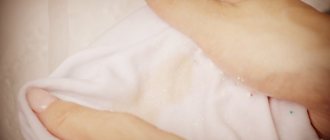An iron is necessary in every home and is a high-tech device that turns ironing into a complete pleasure. Its main and fundamental element is the base, which has various types of surface: titanium, cermet, stainless steel, aluminum, Teflon. But no matter what the coating of the iron is, it naturally tends to become dirty over time during use. You need to know how to clean it without harming the sole. In this article we have collected for you the best tips on how to clean the soleplate of your iron easily and simply!
The best way to remove carbon deposits from irons
A dirty electrical appliance can ruin your clothes and give yourself a very unpleasant surprise. Especially on a holiday when you want to look your best. The dirtier the base, the greater the likelihood of material sticking to it during the ironing process and, as a result, the item may be burnt. The bottom of the iron should always be clean and shiny. You should monitor this very carefully. However, what should you do if it so happens that you didn’t take care of the iron? It’s okay, now we’ll tell you how to use simple steps to restore the sole and iron to their former originality with your own hands.
There are several improvised means that you can use to clean the soleplate of your iron at home:
- hydrogen peroxide;
- salt;
- lemon acid;
- soap;
- indelible pencil;
- vinegar;
- toothpaste;
- paraffin;
- sulfur from a matchbox;
- regular baking soda;
- nail polish remover (acetone cannot be used instead).
The most gentle treatment option is peroxide. You need to apply a few drops to a cotton pad and rub the surface with the necessary force. All dirt will remain on the disc.
Popular cleaning methods
It is advisable to clean the sole as soon as contamination occurs.
Special sprays and pencils will help get rid of carbon deposits . If they are not in the house, do not rush to run to the store - you can eliminate the problem with the help of salt, soda, vinegar and other means that are in the arsenal of any housewife.
Traditional methods are not inferior in effectiveness to industrial preparations, but they should be used with caution: the choice of method will depend on the type of sole material.
The ironing surfaces of many devices are coated with Teflon or ceramic, so the use of abrasives in this case is not suitable.
How to remove carbon deposits from an iron
An easy way to clean the soleplate of any type of iron is to use a special pencil: “Typhoon”, REAM or DIAS. There are several rules on how to clean the soleplate of an iron with a pencil, following which you will not harm either yourself or the device:
- you should heat the device to 1400 Celsius in a vertical position, place it sideways on an unnecessary fabric;
- rub the contaminated area of the iron with the product;
- wipe the sole with a linen or cotton napkin;
- If the iron has a steam mode, you need to use this function and release steam several times.
Important! The composition of the pencil is poisonous and contains acid. Do not allow the molten substance to come into contact with the skin, as it can cause chemical burns. Be extremely careful and careful when handling it.
The pencil will begin to melt and a pungent odor will appear. As a result of the influence of the pencil on the iron, it will remove plaque of any origin, soot, rust and scale from the burnt surface of the iron. If the steam holes are clogged with sediment, simply lubricate them and turn on the steam. After the procedure, wipe the sole with a dry cloth and remove any residue, and clean the steam holes with a cotton swab.
Household chemicals
You already know how to clean the base of the device using traditional methods. Now a few words about what products for this purpose can be purchased in household chemical stores.
There are special pencils on sale that are called “for cleaning the iron.” The principle of their operation is to draw on the heated base of the device. Next, you need to remove the product along with any remaining carbon deposits with a clean cotton cloth.
This pencil can be used to clean the soleplate of an iron with any coating, but you should read the label before purchasing. The recommendations must contain information about what material the product is suitable for and how to use it correctly.
How to clean at home with soap and salt
When cleaning the iron, or rather its base, which is covered with delicate material, use laundry soap.
- Warm up the heating appliance thoroughly.
- Then turn off the power and rub soap on the hot surface.
- Wait until the iron cools down.
- Dry the iron with a damp sponge. The deposits will come off easily.
However, there is one small drawback: the steam holes can become clogged with soap. They need additional cleaning with cotton swabs and steam. And this takes time.
If you don't have soap, use salt. Pour “Extra” onto white paper. You will need to heat the device at full power and iron the salt several times. The carbon deposits should clear.
Just don't take the newspaper. Newspaper paint will stick to the sole and ruin everything.
Using foil
One of the fastest and easiest methods for removing burnt fabric is using foil. To do this, take a small piece of regular aluminum foil with a large thickness, spread it on an ironing board and iron it several times. This method allows you to remove carbon deposits from almost any surface in a couple of movements, but you need to be careful when cleaning, as heated foil can burn your fingers.
How to remove carbon deposits from an iron with baking soda and vinegar
Cover the cold surface with baking soda, adding a few drops of water. You need to mix everything to get a mushy, homogeneous consistency. Apply the composition to the sole and leave for 5-10 minutes, then wipe with a napkin or sponge.
Electrical appliances with Teflon, ceramic or enamel bases should not be cleaned with abrasives. Metal knives and brushes are also strictly contraindicated for such soles. To clean the listed iron bases, prepare the following product: dilute ammonia and acetic acid in a 1:1 ratio. Wipe the warm base; do not heat the iron too much. Don't forget to disconnect the electrical appliance from the power supply.
When working with caustic ingredients, be careful: work in a well-ventilated area and protect your hands with gloves. If the dirt is very ingrained and cannot be wiped off, you can place the cooled device on a cloth moistened with vinegar for 12 hours.
If you know how to clean an iron at home, then your tool will always be clean, ironing will become an easy task and you won’t have to buy a new device.
Types of coatings
Typically, the soleplate of the iron is made of aluminum or stainless steel. For better glide, a special coating is applied to its surface, which can be different:
- Titanium. Its advantages are durability and strength.
- Ceramic or glass ceramic. This sole glides easily over things and is quickly cleaned, but if handled carelessly, chips and scratches may occur.
- Teflon. The material is resistant to synthetic fabrics even when overheated.
- Enamel. It is difficult to scratch, but may crack over time.
The choice of cleaning method depends on the type of coating. The main task is to completely clean the device from dirt and not scratch the surface.
How to clean an iron with a candle
The most delicate surfaces can be cleaned perfectly with a candle. A paraffin candle is a gentle and gentle way of cleaning.
The process is performed in the following order:
- heat the device and disconnect from the power supply;
- then you need to take a candle, wrap it in a thin cotton cloth and iron the dirt. When heated, the paraffin will melt, flow and wash away the stain;
- After this, turn on the iron again and iron the napkin or rag. This will help remove wax residue and stains.
Prevention
You can avoid constant burning if:
- choose the right product - avoid cleaning with abrasive substances;
- wipe after ironing - treat the sole with vinegar or a special pencil;
- choose the right mode - take into account the data indicated on clothing labels;
- use gauze - things made of synthetics and wool should be ironed through a gauze pad;
- Do not fill with tap water - use boiled or distilled water.
By following these rules, you will extend the life of the device. Be sure to read the instructions for it and take into account the type of sole covering.
How to wash the handle and remaining surface of the iron
From constant use of irons, not only the sole, but the entire surface becomes dirty. The handle especially suffers. To clean the top, you can use any fat-dissolving dishwashing detergent or baking soda. But you should know exactly how to clean the surface of the iron.
- Firstly: clean the iron only when it is turned off.
- Secondly: do not wet the sponge too much so that water does not get inside and a short circuit does not occur when turned on.
- Thirdly: do not use products with abrasive additives or metal devices.
What can be used for different types of surfaces
Unsuccessful experiments in cleaning the outer surface of the iron can lead to the fact that the “assistant” in ironing things becomes unusable, so you need to carefully consider the best way to clean the soleplate of the iron from adhered synthetics and other contaminants.
For all types of irons, a universal tool is a pencil. Other products may not be suitable for cleaning the “delicate” surface of an electrical appliance. What is absolutely forbidden to do?
Prohibited:
- scrape off carbon deposits with sharp objects and leave scratches;
- rub the sole with a metal brush or sandpaper;
- rub, wash the iron when it is connected to the network.
How to remove scale
A very important point when caring for an electrical appliance with a steaming function is cleaning the soleplate from scale. It pours out with water and steam and settles on things. It is simply impossible to remove such stains. To avoid trouble, it is better to take distilled water. But if scale has formed, you can fight it in the following ways:
- use the self-cleaning function. The maximum amount of water is poured, the regulator is set to the highest temperature, and the self-cleaning mode is turned on. After turning off, drain the liquid along with the sediment flakes into the sink;
- Pour 20-30 g of citric acid into 200 ml of distilled water, let it dissolve, pour into the tank and turn on the highest temperature. Shake the iron several times and turn on the steam. Limescale and dirt will remain on the cloth and base. You only need to rinse the container and wipe the heated surface. How to descale the soleplate of any iron? Very simple. It can be easily removed with a damp cloth; you can moisten it with vinegar or citric acid. Use cotton swabs to clean the inside of the holes and the tool is ready for use again.
In addition to the methods described, you can take Coca-Cola or Sprite - carbonated drinks containing acid. Pour them into the tank and clean them. The result will please you, but parents need to think about whether it is worth buying this water for their children.
Now you know how to clean the surface of the iron, both the lower and upper parts. Folk remedies have varying effectiveness, but the most convenient and fastest way to combat carbon deposits is a pencil. To avoid having to endlessly clean, study the temperature regime that is suitable for different types of fabrics (silk, wool, synthetic materials) and try to iron without disturbing it. The sole will be clean and ironing will be quick.
General cleaning rules
When removing contamination, you should choose methods that are suitable for a specific iron model. However, there are general recommendations for performing the procedure.
Whatever material the sole is made of, you should remember that cleaning it with metal and sharp objects is strictly prohibited. For example, scissors or hard brushes. You cannot use sandpaper either. Otherwise, scratches will form on the surface of the sole, which will subsequently be impossible to get rid of.
If the procedure is carried out using a chemical agent, after completion it is necessary to wipe the device with a damp cloth. If you do not wipe off any remaining cleaning product in a timely manner, there is a risk of damaging your clothes during subsequent ironing.
It is better to clean the surface on the balcony or in a room with open windows. When using chemicals, you must wear a special mask.
If there are fragments of stuck fabric on the surface, you need to remove them with a cotton swab dipped in vinegar.
Soles: characteristics and features
| Outsole material | Description |
Ceramics and metal ceramics | Relatively new species. It is lightweight and has an interesting design. The main “enemy” of such a coating is metal buttons, zippers, and any sharp objects that get under the sole during ironing. The surface is poorly resistant to scratches, chips often appear, and peeling is possible even due to a small crack. It is recommended to treat devices with a ceramic coating as carefully as possible and not to use abrasives or hard brushes for cleaning. |
Aluminum | The metal is very light, glides well over fabrics, is not subject to corrosion, is durable and is considered budget-friendly. At the same time, aluminum is easily deformed, scratches quickly appear on it, and an iron with such a soleplate can leave shiny spots on things. It is advisable to iron things through gauze. Aluminum can be cleaned with chemicals, powders, or the hard side of a dishwashing sponge. |
Stainless steel | Irons with stainless steel soles are quite weighty, but are valued for their low cost, durability and ability to efficiently iron any fabric. Such irons are not afraid of zippers, buttons, or sharp rivets. Steel, if you are not too zealous, can be cleaned with any abrasives, sponges and brushes. On a note! There are models of irons with stainless steel soles and coatings (chrome, sapphire and others). It is better to treat these household appliances more carefully, beware of rough mechanical surface cleaning methods. |
Teflon | The coating is non-stick and can be easily cleaned with household chemicals and folk remedies that do not contain abrasive particles, since the resistance to scratches is very mediocre. |
| Composite materials and titanium | Soles made of these materials glide flawlessly over fabrics, smoothing out even the smallest wrinkles. The soles are durable and it is difficult to leave deep scratches on the surfaces. They can be safely cleaned using any available means. |
